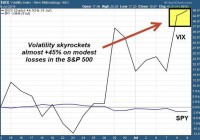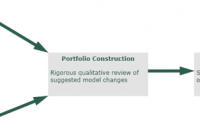The Western Asset High Income Fund II has been trimming its distributions for years. That’s a problem for income-hungry investors. But distribution cuts and a historically stable NAV suggest HIX will live to fight another day. If you are after a reliable stream of income that can you use to live, don’t buy the Western Asset High Income Fund II (NYSE: HIX ). If you are looking for a decent high-yield fund, however, take a look. Those two statements may seem at odds with each other, but they aren’t. Here’s why… A little more than generic At its core, HIX is a high-yield bond fund. As its name implies, Western Asset Management is calling the shots and, over the long haul, its done a solid job. For example, the fund’s trailing annualized 15-year total return through June based on net asset value, or NAV, is roughly 9.5%. That includes the reinvestment of distributions. Compare that to the Vanguard High Yield Corporate Fund’s (MUTF: VWEHX ) annualized 6.3% over that span and HIX looks like a solid high yield option. To be fair, HIX’s standard deviation over that span was 14 compared to Vanguard’s 8. So HIX achieved the higher return by taking on more risk. So for risk averse investors, a more conservative high-yield fund might be a better choice. But if you can stomach the risk, HIX’s performance has been good over the long term. Part of the reason for the added volatility is that HIX makes use of leverage to enhance returns. Recently leverage stood at around 25% of assets. This works great when rates are low because the fund can easily create a carry trade, borrowing for less than it earns and passing the difference on to shareholders. However, leverage also increases the impact of price movements. That’s a great thing in up markets because it enhances returns, but a bad thing in down markets because losses get exacerbated. The other issue to note at HIX on the risk front is that it has a “strategic” allocation to emerging market debt. It’s only around 8% or so of assets, but emerging market debt can be more volatile than other bonds. On the one hand it provides diversification, on the other it can be a drag when emerging markets are struggling. But, at less than 10% of assets recently, it won’t be the driving force at the fund right now. It’s just something to keep in mind, especially since management has the leeway to increase that exposure to as much as 35% of assets. So, on the whole, HIX is a solid long-term performer for those willing to take on a little more risk. That said, the last year has been pretty rough. For comparison, over the trailing 12 months through June, HIX is down 4.5% or so and Vanguard High Yield Corporate is up around 1.5%. Like so many high-yield funds, energy was a big issue in HIX’s poor showing. Leverage, of course, didn’t help either. The impact of this rough spell is worth noting, however. Between April of 2014 and April of 2015, the fund’s fiscal year ends in April, HIX’s net asset value fell from $9.47 a share to $8.57. More recently it’s stood at around $8.25. That’s clearly the wrong direction. But HIX has been here before. For example, in fiscal 2012 the fund’s NAV declined from $9.57 a share $8.86 only to almost completely recover in fiscal 2013. Based on the fund’s long-term performance, the current downdraft is something that it will likely eventually recover from. The income issue Which brings us to the income issue. The fund’s distribution has been shrinking steadily since 2010 when it was $0.09 a month. Today the distribution rounds to $0.07 a month. Not a huge decline on an absolute basis, but a notable one when looked at percentage wise. I would expect the downward trend to continue, so income focused investors looking to replace a paycheck might want to look elsewhere. But I don’t think the distribution cuts are inherently a bad thing. Rates are at historic lows, so older debt that’s matured (or sold) is replaced with the lower-yielding fare in the current market. Thus, the income the portfolio generates is naturally declining. The distribution cuts are simply a part of that. More importantly, the cuts show that management is willing to take the lumps that come along with larger market shifts to keep the portfolio from self liquidating over time. A lot of closed end funds try to delay cuts until there is no choice but to cut, which often leads to more drastic distribution declines. And if income isn’t your focus, the willingness to slowly trim distributions to protect capital is probably the more preferable option. It’s the income thing So, for investors, I think the biggest issue right now is the income question. If you want a steady distribution, HIX isn’t likely to provide it right now. If you are looking to buy a high-yield fund because you want some exposure to the asset class, however, HIX is worth a look. Management is dealing with a rough patch right now, but it’s done so before successfully and it is willing to trim distributions to ensure that it lives to fight another day. That said, the fund isn’t cheap to own, with an expense ratio of around 1.5%. That’s not outlandishly high, but it is clearly more than you’d pay for an exchange traded fund or an open-end mutual fund. Leverage costs are a part of that. But you’re not likely to find an around 11% yield from a high-yield ETF or open-end fund (noting, of course, that HIX’s distributions are likely to shrink further). And HIX is trading at a discount to NAV of around 8%, which is fairly steep for this fund. In fact, the average was a premium of around 1% over the trailing three years. So, for those looking to trade around premiums and discounts, HIX could be worth a deep dive right now. Just don’t expect the current distribution level to hold. Disclosure: I/we have no positions in any stocks mentioned, and no plans to initiate any positions within the next 72 hours. (More…) I wrote this article myself, and it expresses my own opinions. I am not receiving compensation for it (other than from Seeking Alpha). I have no business relationship with any company whose stock is mentioned in this article.

